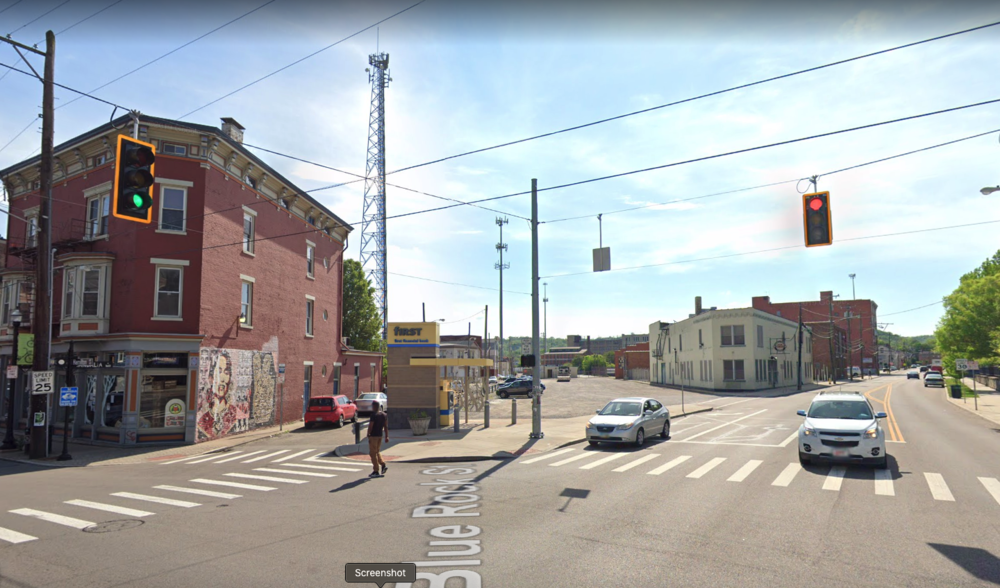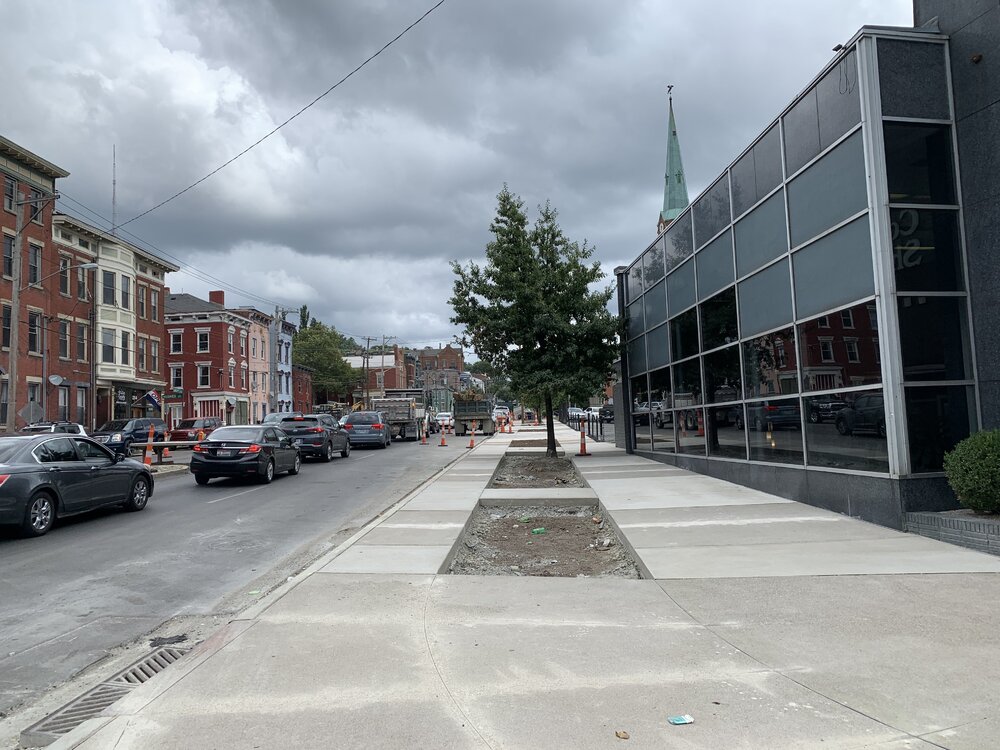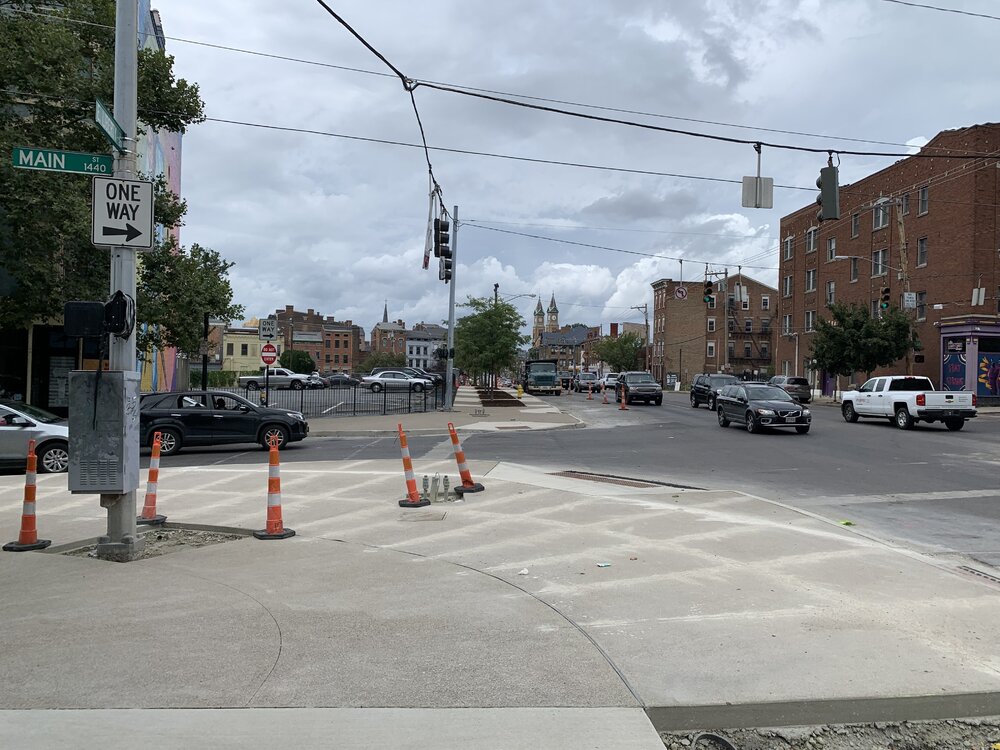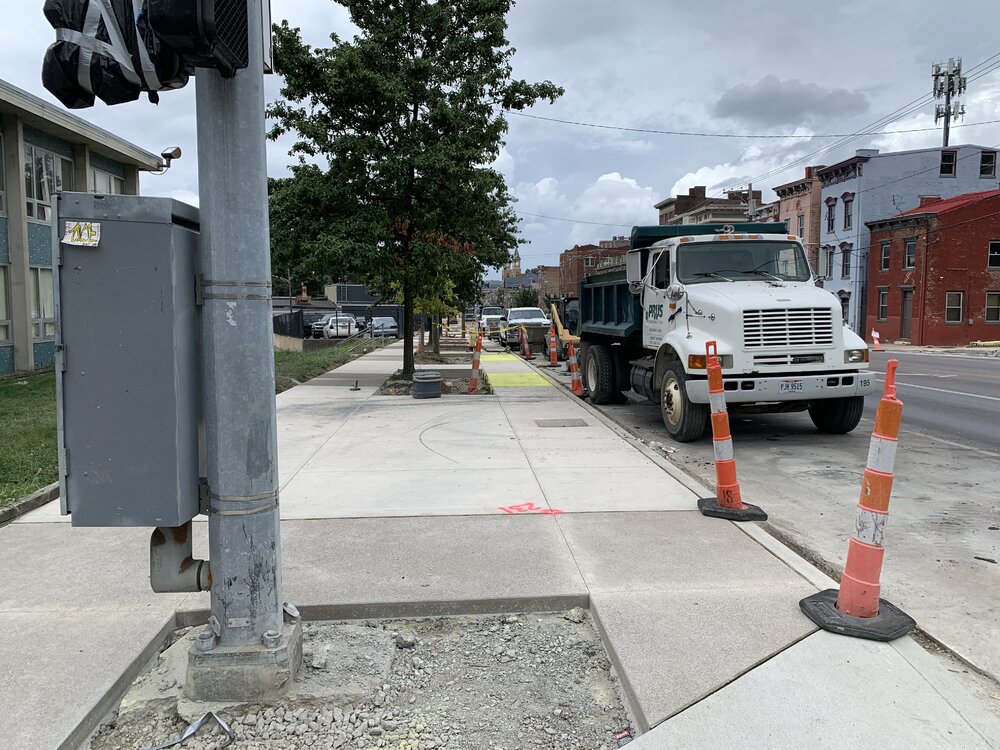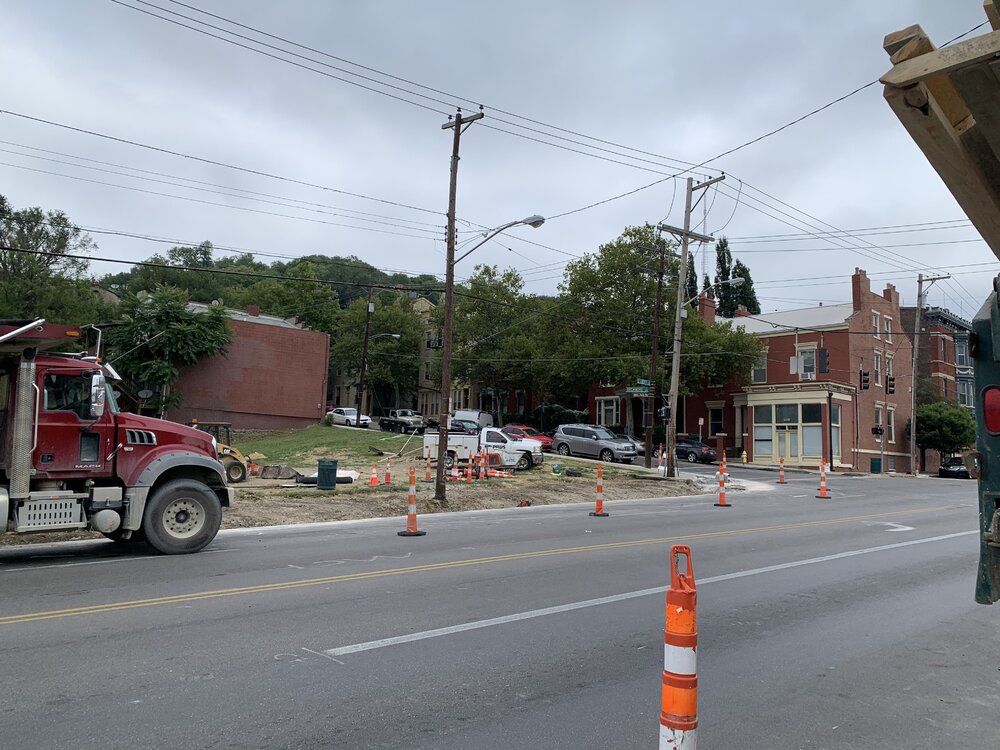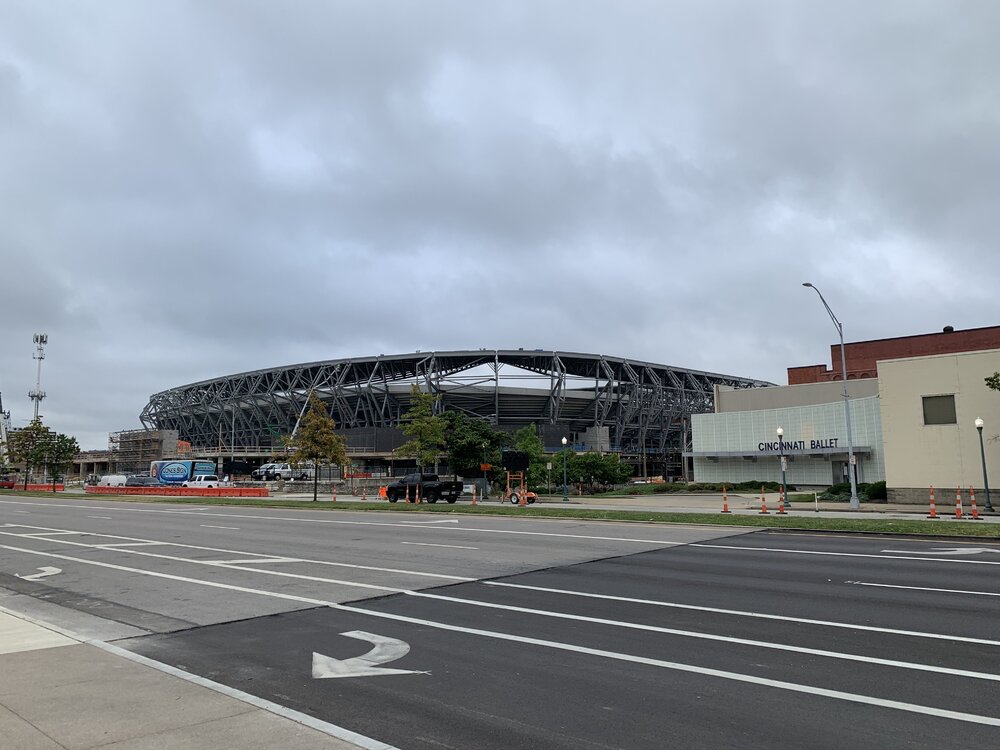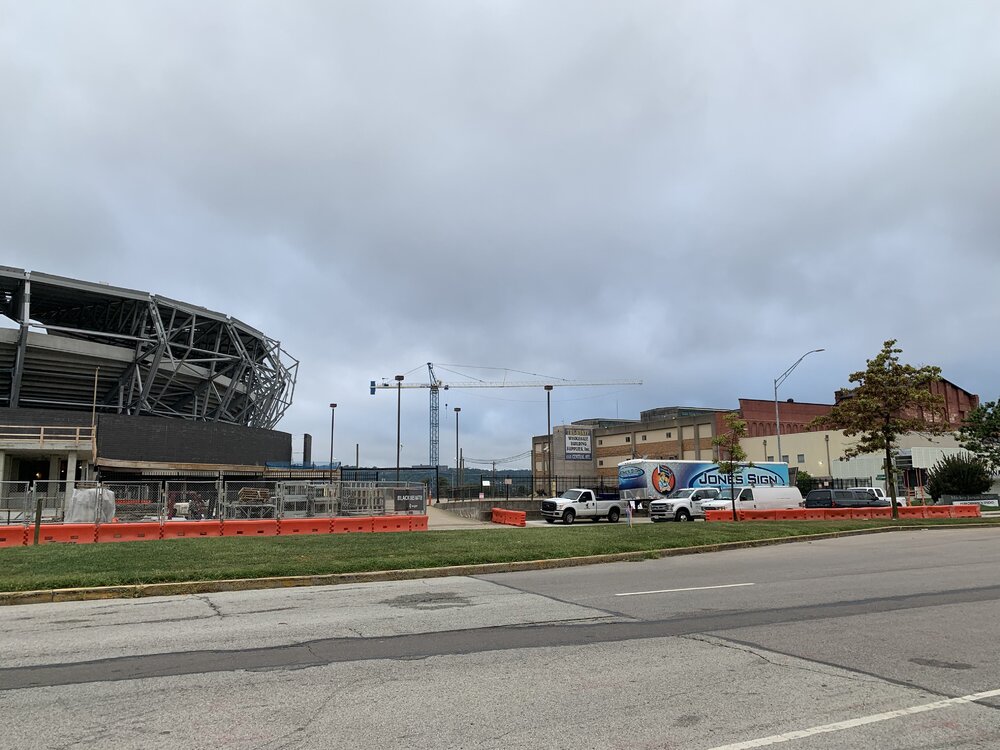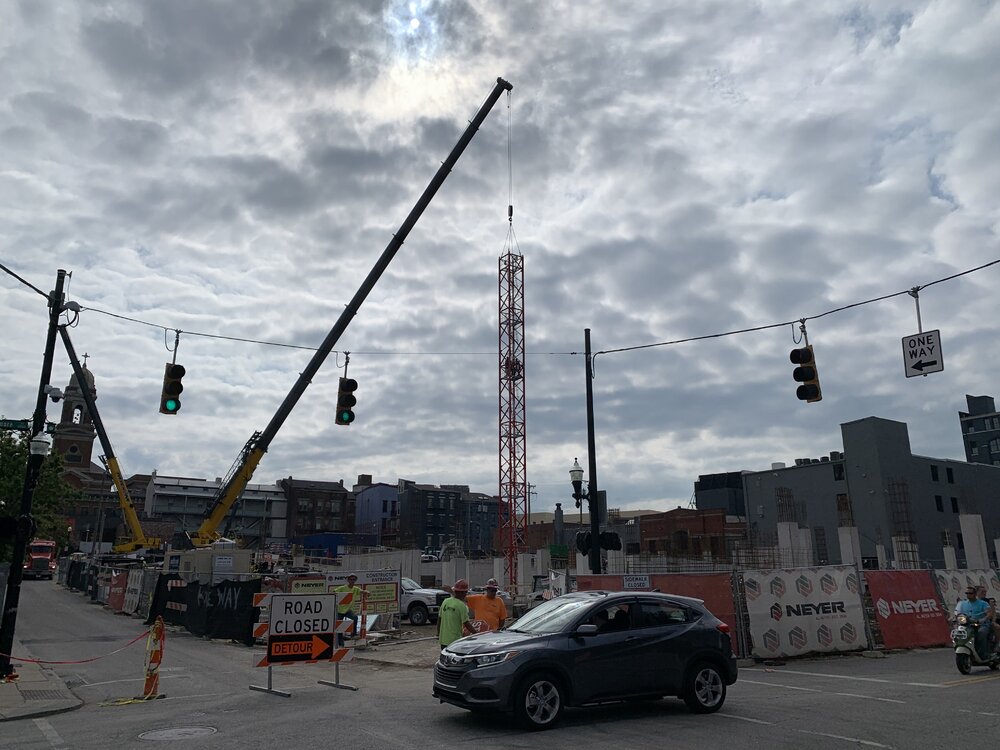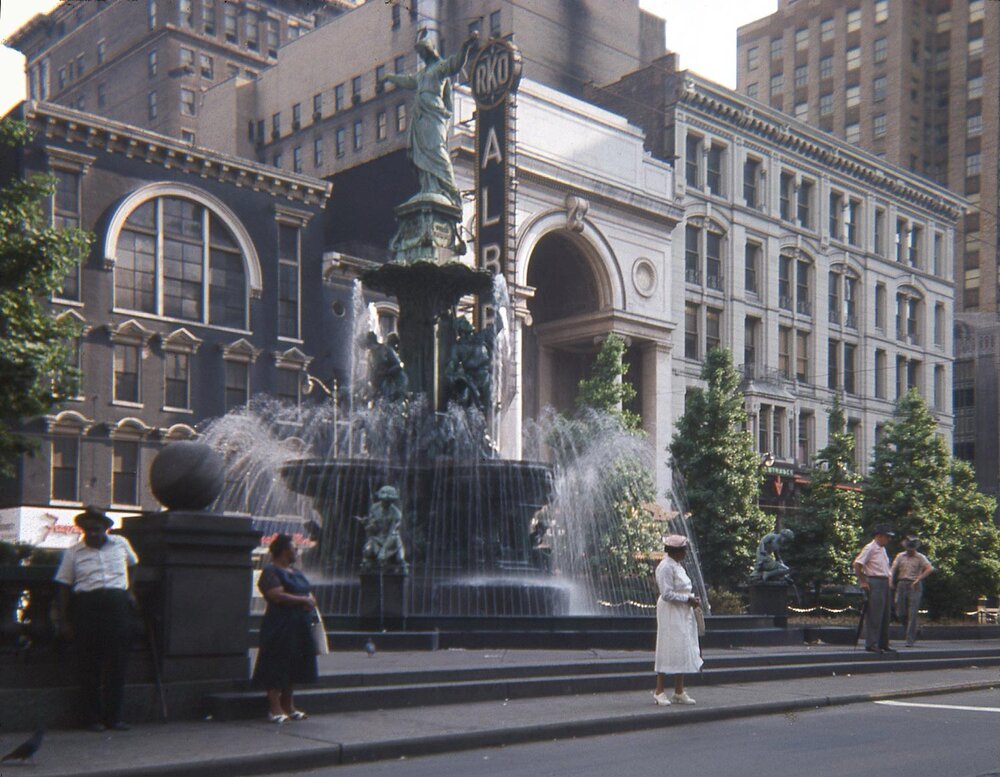JYP
Moderator
-
Joined
-
Last visited
-
Currently
Viewing Topic: Cincinnati: Downtown: Convention Center / Hotel
Everything posted by JYP
-
Cincinnati: Over-the-Rhine: Development and News
Well look at what's coming to Planning Commission for its PD revision. Finally! https://www.cincinnati-oh.gov/planning/assets/File/Liberty %26 Elm Major Amendment.pdf
-
Springfield: Development and News
Good things are happening in Springfield!
-
Cincinnati: Northside: Development and News
-
Cincinnati: Liberty Street Road Diet
Construction crews have finished all but the east sycamore and liberty bump out on the south side. Started today on the north side of the street.
-
Cincinnati: Over-the-Rhine: Development and News
I walked by there this morning and should have gotten a photo. All the existing buildings have been painted. Perserverance is out of the ground with the first floor poured. Willkommen Vine infill site is graded.
-
Cincinnati Streetcar / The Connector News
It could make some sense to extend such an east-west line up Reading, use the abandoned railroad bridge and terminate at Eden Park. Would get the new Ballet and ArtClimb to the Art Museum connected. But then again at that point, why not just go all the way to Walnut Hills?
- Cincinnati: West End: TQL Stadium
-
Cincinnati: Random Development and News
While in general this is the case, I've seen several projects, including 4th and Plum start apartment renovations with a goal of maintaining price points. In Cincinnati, our urban housing market is too small and dominated by too few players to really have a huge diversity in rent structures. I am cautiously optimistic this is changing with the construction of more residential apartments downtown and in OTR/Pendleton. Subsidy is one way to induce affordability in new construction, either through LIHTC or other incentives. Other cities have explored Inclusionary Zoning as a policy to require a percentage of affordable in new projects however the impact is that this generally inflates the market-rate side of a project to make up losses taken on the affordable units. This actually exacerbates the problem for middle-income households who are priced out on the market side but exceed salary or other requirements for the affordable units. In general it is hard to deliver on affordability. Residential demand for urban walkable housing has exploded nationally, benefiting the coastal cities until they became too expensive and then "trickling down" to the cool cluster cities like Austin or Nashville. In Cincinnati, we are lucky to have what is underway happening today, but we will still need more if we want to open up affordability to more people on the income ladder.
-
Greene County: Development and News
I lived in this house next to the Little Art Theater and now Dave Chapelle is redeveloping it. https://ysnews.com/news/2020/08/planning-commission-chappelle-properties-to-be-renovated
-
Cincinnati: Pendleton: Development and News
- Cincinnati: Downtown: The Banks
He's already called in 3CDC as a development advisor for the lots and has suggested just building the deck coverings instead of building out the parking. I am not sure why there is such urgency but he tends to think he is right and once he arrives at a decision he digs in. This probably has more to do with his ego (i.e. legacy and winning) than anything else.- Cincinnati: Fountain Square: Development and News
- Cincinnati Streetcar / The Connector News
Right. We just looked at permit data and added it up. https://www.urbanfastforward.com/streetcar This is the type of analysis the city could easily do if it cared. Heck they can do more because they have payroll tax data, a complete inventory of abated properties, and more.- Cincinnati Streetcar / The Connector News
So Council overrode the Transit fund veto AND passed the TIF funded ordinance. According to the what the guy from the Law Department said at the meeting, the TIF funded ordinance supersedes the Transit Fund ordinance since that one is a month older. This means the posturing over using the transit fund and potentially being sued should have been a non-issue if the TIF funded ordinance was allowed to stand. But instead, the Mayor vetoed it. So the Mayor, with the choice to not use the transit fund, choose to veto the TIF fund ordinance which sets up the streetcar reopening using the transit fund and potentially lets SORTA sue the city in response. Then the Mayor blames Council for exposing the city to litigation he could have prevented if he could have just gotten over his stupid streetcar grudge. Sounds like good governance.- Cincinnati: Over-the-Rhine: Development and News
This project would not be allowed as is under the proposed Historic District Infill guidelines currently on the way to HCB. The HCB hearing on them is Aug 3. If anybody on this forum would like to register their opinion to HCB or Planning Commission, now is the time!- Cincinnati Brewery / Beer / Alcohol News
I'm encouraged that they are keeping 3 Points' head brewer onboard as well.- Cincinnati: Fountain Square: Development and News
I think it has more to do with that this is 5/3rds font for everything so it's part of their bland...I mean brand!- Cincinnati: Walnut Hills / East Walnut Hills: Development and News
A good form-based code has a extensive front loaded public engagement process to determine community values and goals for development. We did this in 2012. The public engagement process was city-wide and lasted for a month. There were other smaller stakeholder engagements for the four initial neighborhoods and opportunities for engagement at every level of code adoption from the text to the new zoning map. It would be during this process that code calibration would determine the desired density and development patterns for the neighborhoods being regulated under the FBC. A standard feature of FBC's is that they allow for "by-right" development which means that more intense development can be allowed if it meets all the parameters of the code. If not it can pursue variances like under normal zoning, or a zone change. What is great about a well designed FBC is that it allows for "pick-up truck" level developers to build some of the middle-range housing typologies that are often hard to allow with conventional zoning, like 4-plex's or cottage courts. In many historic and urban areas it allows for new construction to follow the existing urban scale of the neighborhood since that is often what community stakeholders want. IMO we did a few things wrong with the Cincinnati FBC but it gets most things right. Right now it is hard to change the FBC because there is a lack of political will. In 2013 the Mayor ran on a platform opposed to the FBC and put up roadblocks to implementing and expanding it. When it was implemented there were a few map errors and regulatory errors. In at least one case, a developer requested a FBC zoned site to be rezoned to a PD because the land (which was on a main business street) was accidentally zoned for multi-family with no retail storefront. In this era, it is easier for a developer to go with a PD zoning than to fix the FBC. And for city leaders it is easier to play master developer under a PD than to adhere to a community calibrated code that gives political leaders less control.- Cincinnati: I-71 Improvements / Uptown Access Project (MLK Interchange)
The Deaconess Hospital and Shriners shut down during this time. Could have played a small role. However UC added some new buildings and Christ expanded. So where did those 4,000-ish vehicles go?- Cincinnati: Liberty Street Road Diet
It is going to be weird with the street trees on the south side of the street in the middle of the sidewalk.- Cincinnati: Downtown: Development and News
5 years from now it will be a hip new restaurant called "The Chung Resurrection." It will be decorated with wigs and other memorabilia from the store. Drinks and dishes will be hair-dye themed to honor Sun Wigs. Everyday they will have a different Going out of Business special on the sandwich board.- Newport, KY: Ovation
It is but then again, it's not. Newport has a flood berm that is elevated to withstand a 500-year flood. This part of Ovation is behind that berm so floodplain regulations do not apply since the land is protected by the berm. This is just bad planning.- Cincinnati Streetcar / The Connector News
I take this as a sign that the administrations conversations with the FTA went well. ?- Liberty Township: Liberty Center
This is a huge strategy departure for Steiner and their development team. They are looking at the fall of box retail and the precarious position their existing leasing is in and making major course corrections. I don't blame them. Build more residential to help support the town center. I think what hurts them is that Hamilton is doing really well. Why settle for "new urbanism" when you have some really good old urbanism down the road?- Cincinnati Streetcar / The Connector News
Honestly the best analogy to the streetcar battles is the endless fight over the ACA. - Cincinnati: Downtown: The Banks






